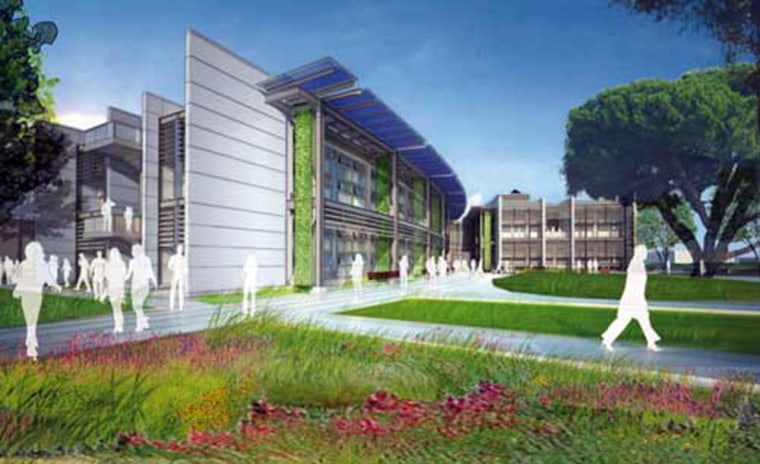One of NASA's most ambitious new projects isn't in space, but on the ground.
The agency is planning to build its most environmentally-friendly building at its Ames Research Center in Moffett Field, Calif. The structure, to be called Sustainability Base, will likely be the "greenest" building in the federal government, said Steve Zornetzer, Associate Center Director at NASA Ames.
The ceremonial groundbreaking on the $20.6 million building is set for Aug. 25, and construction is expected to be complete around November 2011.
The name for the new facility is an homage to the Tranquility Base from the Apollo 11 moon landing of July 20, 1969, when NASA astronauts Neil Armstrong and Buzz Aldrin became the first humans to land and walk on the lunar surface. NASA celebrated the 40th anniversary of the historic Apollo 11 flight last month.
"The very first image of this blue orb that we call Earth came from NASA," Zornetzer said. "When the Apollo astronauts looked back and saw the Earth...it was such an astounding image that it's really served as almost a touchstone for the whole environmental movement."
Smart building, green building
Utilizing solar panels, fuel cells, water recycling systems, and even technology derived from NASA's human and robotic space exploration missions, the building will aim for a LEED (Leadership in Energy and Environmental Design) platinum plus certification.
Sustainability Base is designed to consume no net energy — in other words, it will power itself. And compared to conventional buildings of equal size, it will use 90 percent less potable water.
"I decided that if we're going to build an energy efficient building, why don't we build the most energy efficient building we can possibly build, in the spirit of what we need to do for this country," Zornetzer told SPACE.com.
The centerpiece of the building's cutting-edge technology is its intelligent control system, which is based on ones originally developed for NASA spacecraft. A computer inside Sustainability Base will connect to the Internet to call up weather forecasts for the local area to help it plan environmental control. It will have access to electronic calendars of workers in the building, so it can predict how many people will be at a given meeting, and adjust heating and cooling systems appropriately.
Instead of air conditioning, Sustainability Base is designed to cool itself from geothermal wells that route naturally cooled water from underneath the ground through pipes and cooling panels inside the building.
The computer will also control the windows, so when a chill nighttime breeze flows near, the building can take advantage of it too.
NASA also plans to encourage occupants to try to improve their own levels of energy efficiency, which the building will keep track of and report to people on their laptops.
"We want people in the building to compete, to try to optimize their own energy efficiency so they can get the greatest amount of work done with the least amount of watts," Zornetzer said.
Sustainability Base will serve mainly as an office building, but may also house some scientific research and engineering.
The cost of the building will be provided by a NASA program called Renovation by Replacement, which aims to replace antiquated facilities with more modern, energy efficient ones. The building was designed by the AECOM and William McDonough + Partners architectural firms. Swinerton Inc. will carry out the construction.
